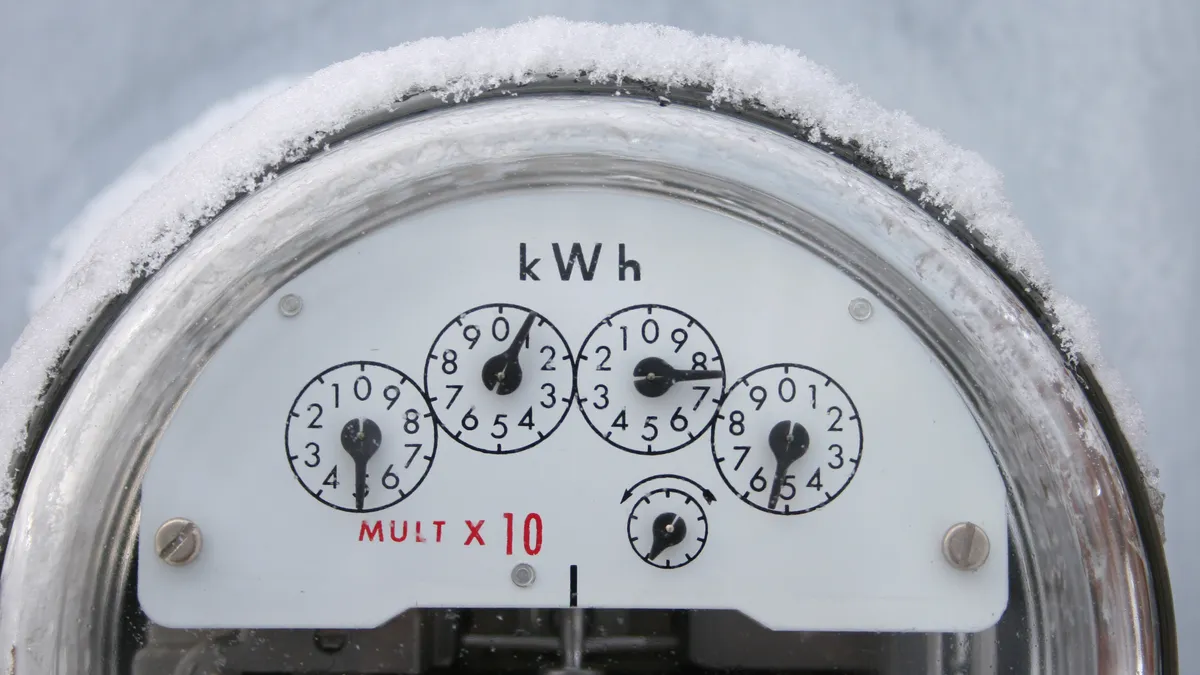Dive Brief:
-
The District of Columbia government, its ratepayer advocate and a trade group are urging the district’s utility commission to reject a request by Exelon’s Potomac Electric Power Co., called Pepco, for a multi-year rate plan, according to Friday filings at the agency.
-
Pepco’s proposed 3-year rate plan is a business as usual plan “masquerading as a ‘Climate Ready Pathway,’” Courtney Lane, a principal associate at Synapse Energy Economics, said in a filing for the district’s government. The proposed multi-year rate plan lacks appropriate incentives for Pepco to contain its costs or protect its customers from unreasonable rates, according to Lane.
-
The opposition to Pepco’s proposal resembles emerging concerns from some utility regulators about rising electric rates, in some cases driven by the energy transition, according to Paul Patterson, an equity analyst for Glenrock Associates. “We’re beginning to see — in certain jurisdictions — regulatory pushback,” he said.
Dive Insight:
The issue centers on Pepco’s April proposal to raise its overall electric rates in Washington, D.C., by roughly 6% a year for three years starting this year for a total revenue increase of about $190 million. The proposal includes a 10.5% return on equity and will help meet the district’s clean energy goals, according to the Exelon utility.
However, the D.C. government, the Office of the People’s Counsel for the District of Columbia and the Apartment and Office Building Association of Metropolitan Washington, called AOBA, oppose key elements of Pepco’s proposal.
Synapse’s Lane told the Public Service Commission of the District of Columbia that Pepco’s proposal fails to adequately advance the district’s goals around grid modernization, increased distributed energy resources and non-wires alternatives.
Pepco has an existing pilot multi-year rate plan, but it hasn’t been adequately assessed, according to Lane. The PSC should continue historical test year ratemaking until an evaluation framework is developed for how to track and assess the benefits of a multi-year rate plan, Lane said.
The ratepayer advocate’s office said the PSC should reject Pepco’s multi-year rate proposal “There is no evidence to support a finding that the company’s [multi-year rate plan] pilot provided any net public benefits or was in the public interest,” the office said.
Generally, multi-year rate plans, which are based on expected utility spending, benefit utilities and their shareholders through predictable rates and reduced regulatory lag for cost recovery, but haven’t been shown to be helpful to consumers, according to the ratepayer’s office. In contrast, historical test-year ratemaking bases a utility’s rates on its actual expenses from a single past year.
About 90% of the projects in Pepco’s “climate ready grid” modernization initiative are routine reliability projects that any prudent utility would make, and some of those projects could be delayed or eliminated without hurting the district’s climate goals, the ratepayer’s office said.
With Pepco facing flat or declining electricity sales, the PSC should rein in the utility’s spending, according to AOBA. “In the context of declining kWh and kW billing units, as well as only modest increases in the numbers of customers served, maintenance of the affordability of electric service in the District necessitates more rigorous efforts to trim Pepco’s planned rate base growth to reflect only essential expenditures,” the trade group said.
Glenrock’s Patterson cited several recent rate decisions as signs that some regulators may be concerned about how much consumers pay for electricity. They include:
- The early January decision by the New Mexico Public Regulation Commission to approve a $15.3 million rate hike, with a 9.26% return on equity, for Public Service Co. of New Mexico, down from a requested $63.8 million increase with a 10.25% ROE;
- December decisions by the Illinois Commerce Commission authorizing a $506 million revenue increase over four years for Exelon’s Commonwealth Edison subsidiary, down from its $1.5 billion request, and a $58 million hike for Ameren Illinois, which asked for $448 million over four years; and
- In August, Connecticut regulators slashed United Illuminating Co.’s, or UI’s, proposed rate hike to $23 million from $131 million while earlier in the year shifted to a performance-based regulation framework for UI, an Avangrid subsidiary, and Connecticut Light & Power, owned by Eversource Energy.
Regulatory pushback on rising rates will occur jurisdiction by jurisdiction, Patterson said, noting that states such as California and New York have been generally supportive of utility spending proposals that bolster the energy transition. Maryland regulators last month approved a multi-year rate plan for Exelon’s Baltimore Gas and Electric subsidiary, he noted.
It may be easy to support programs that bolster state policy goals, but ultimately someone must pay for them, according to Patterson. “It’s one thing to order off the menu. It’s another to pay for it,” he said.
Further, in recent years, reduced natural gas prices, a key factor in setting electricity prices, has buffered consumer bills from some utility spending, Patterson said. However, growing liquefied natural gas exports may contribute to overall higher gas prices in coming years, he said.














